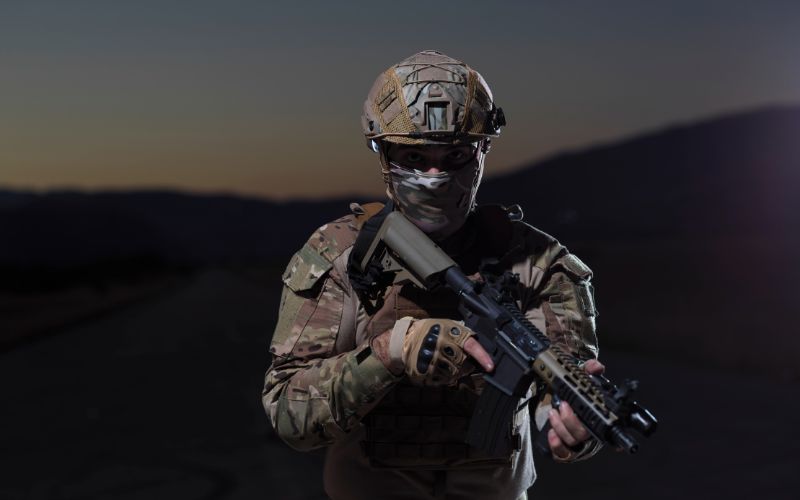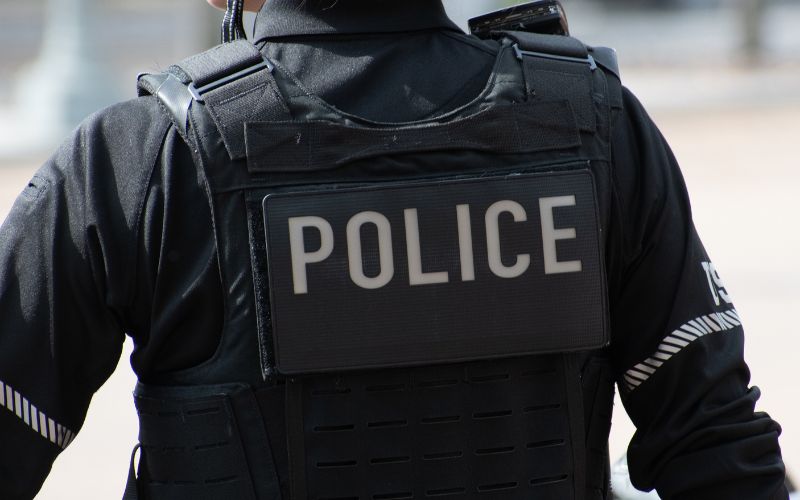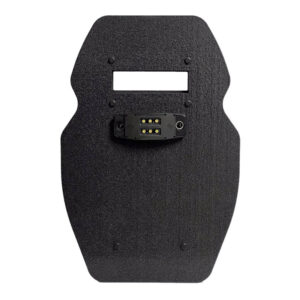The Role Of Tactical Gear In Counterterrorism Efforts

Counterterrorism is a high-stakes endeavor that requires meticulous planning, superior training, and the right equipment. Among the most critical elements in these operations is tactical gear—specialized equipment designed to provide law enforcement and military personnel with the tools necessary to perform in high-risk environments. Tactical gear enhances the effectiveness of counterterrorism units and ensures their safety in life-threatening situations. This blog explores the crucial role that tactical gear plays in counterterrorism efforts, examining its importance in various aspects of operations, from intelligence gathering and surveillance to direct engagement with hostile forces.
The Evolution Of Tactical Gear In Counterterrorism
The evolution of tactical gear in counterterrorism can be traced back to the changing nature of terrorist threats. In the early days of counterterrorism, the focus was primarily on reactive measures—responding to terrorist incidents after they occurred. However, as terrorist tactics evolved, so did the counterterrorism approach. The need for a more proactive stance, including preemptive strikes and intelligence-driven operations, led to the development of specialized tactical gear designed to address specific challenges.
Initially, tactical gear was relatively basic, consisting of standard military equipment such as body armor, helmets, and firearms. However, the increasing complexity of terrorist threats, including the use of improvised explosive devices (IEDs), chemical weapons, and unconventional warfare tactics, necessitated the development of more advanced gear. Today, counterterrorism units are equipped with state-of-the-art technology, including night vision goggles, ballistic shields, tactical communication systems, and unmanned aerial vehicles (UAVs), all designed to enhance operational capabilities and minimize risks.
Role Of Tactical Gear In Enhancing Operational Effectiveness

The primary role of tactical gear in counterterrorism is to enhance the operational effectiveness of security forces; in high-stakes scenarios, where every second counts, the right equipment can mean the difference between success and failure.
Communication Systems
Effective communication is crucial in any counterterrorism operation. Tactical communication systems, such as encrypted radios and headsets with Molle radio pouch, allow team members to coordinate their actions in real-time, ensuring everyone is aware of the situation. These systems are often equipped with noise-canceling technology and secure channels to prevent eavesdropping by hostile forces. Maintaining clear and secure communication is essential for executing complex operations, such as hostage rescues or coordinated assaults on multiple targets.
Ballistic Protection
The threat of gunfire and explosions is ever-present in counterterrorism operations. To mitigate these risks, personnel are equipped with advanced ballistic protection, including body armor, helmets, and ballistic shields. Modern body armor is designed to be lightweight yet highly effective. Such body armor works effectively by stopping high-velocity rounds and shrapnel. Ballistic shields, often used in close-quarters combat, provide additional protection while allowing operators to advance on a target. This gear’s effectiveness protects lives and boosts the confidence of personnel, allowing them to perform their duties more effectively.
Night Vision And Thermal Imaging
Many counterterrorism operations take place in low-light conditions, where visibility is limited. Night vision goggles and thermal imaging devices are indispensable tactical tools in these situations, allowing operators to detect targets that would otherwise be invisible. These devices amplify ambient light or detect heat signatures, providing a significant advantage in dark or obscured environments. The ability to see in the dark enhances situational awareness and allows for stealthier approaches, reducing the risk of detection by enemy forces.
Mobility And Versatility
Tactical gear is designed to provide maximum mobility and versatility to operators. From lightweight, breathable uniforms to chase tactical modular load-bearing vests, every piece of equipment is engineered to facilitate quick movement and adaptability in the field. Modular gear systems allow operators to customize their load-outs based on the mission, whether direct assault, surveillance, or bomb disposal. The ability to move quickly is crucial in counterterrorism operations, where the situation can change rapidly and unpredictably.
Ensuring Counterterrorism Personnel Safety

While operational effectiveness is a primary concern, the safety of counterterrorism personnel is equally important. Tactical gear plays a vital role in protecting operators from the myriad dangers they face in the field, from gunfire and explosions to chemical and biological threats.
Body Armor
Modern body armor is a cornerstone of personnel protection in counterterrorism operations. Made from advanced materials such as nylon and ultra-high-molecular-weight polyethylene (UHMWPE), this armor can stop high-velocity projectiles and shrapnel while remaining lightweight and comfortable. In addition to protecting vital organs, body armor is often supplemented with trauma plates that provide additional protection against blunt force impacts. You have to choose the right body armor for different threat levels.
Hazardous Material (HazMat) Gear
The threat of chemical, biological, radiological, and nuclear attacks is a significant concern in counterterrorism. To protect against these threats, personnel are equipped with specialized HazMat gear, including gas masks, protective suits, and decontamination kits. This gear is designed to prevent exposure to harmful agents while allowing operators to continue their mission. In situations where CBRN threats are suspected, HazMat gear is essential for safeguarding personnel and civilians.
Medical Kits And First Aid
Immediate medical intervention can differentiate between life and death in an injury. Tactical medical kits, carried by all operators, contain essential supplies such as tourniquets, hemostatic agents, and chest seals. These kits are designed for rapid deployment, allowing personnel to administer life-saving treatment in the field before evacuation to a medical facility. In addition, many counterterrorism units include trained combat medics who can provide more
advanced care in emergencies.
Helmet And Eye Protection
The head is one of the body’s most vulnerable areas, making helmet and eye protection critical components of tactical gear. Modern chase tactical helmets are designed to protect against ballistic threats, blunt force trauma, and fragmentation. They are often equipped with mounts for night vision devices and communication systems, further enhancing their utility. Eye protection, such as ballistic goggles, shields the eyes from debris, shrapnel, and harmful light, ensuring that operators maintain their vision in hazardous environments.
Specialized Gear For Unique Counterterrorism Scenarios

Counterterrorism operations often involve unique and challenging scenarios that require specialized gear beyond the standard tactical loadout. These scenarios can range from underwater operations and high-altitude insertions to urban warfare and hostage rescue missions.
Breaching Equipment
In urban environments, where terrorists may barricade themselves in buildings, breaching equipment is essential. This gear includes tools such as battering rams, explosive charges, and hydraulic spreaders designed to gain rapid entry into fortified structures. Speed and surprise are critical in these situations, and breaching equipment allows counterterrorism units to neutralize threats before they can react.
Drones And Robotics
Unmanned aerial vehicles, commonly known as drones, have become invaluable assets in counterterrorism operations. Equipped with cameras, sensors, and sometimes even weapons, drones provide real-time intelligence, reconnaissance, and surveillance (ISR) capabilities. They allow operators to monitor a target area from a safe distance, identify threats, and even engage hostile forces without putting personnel at risk. Similarly, ground-based robots are used for tasks such as bomb disposal and surveillance in dangerous environments, reducing the need for operators to expose themselves to potential hazards.
Climbing And Rappelling Gear
In scenarios where terrorists have taken hostages in multi-story buildings or remote locations, climbing and rappelling gear is often required. This equipment allows counterterrorism units to approach a target from unconventional angles, such as descending from rooftops or scaling walls. The element of surprise gained through vertical insertion can be a decisive factor in successfully resolving a hostage situation or neutralizing a threat.
Underwater Gear
Maritime counterterrorism operations, such as those involving hijacked ships or underwater sabotage, require specialized underwater gear. This includes scuba equipment, underwater navigation systems, and waterproof communications devices. Operators trained in underwater operations, such as Navy SEALs, use this gear to approach targets stealthily from the sea, often executing surprise attacks that catch terrorists off guard.
The Future Of Tactical Gear In Counterterrorism
As terrorist threats evolve, so will the tactical gear used in counterterrorism operations. Emerging technologies, such as wearable exoskeletons, advanced AI-driven reconnaissance systems, shooter kits with armor plates, and next-generation body armor, promise to further enhance counterterrorism units’ capabilities.
Wearable exoskeletons, for example, could provide operators with increased strength and endurance, allowing them to carry heavier loads and move more quickly in the field. AI-driven systems could revolutionize intelligence gathering and analysis, providing real-time insights and predictions that improve decision-making in the heat of battle. Meanwhile, advances in materials science could lead to lighter, more effective body armor and protective gear, enhancing mobility and comfort without compromising safety.
Conclusion
Tactical gear is a critical component of counterterrorism efforts, providing the tools to operate effectively and safely in some of the most dangerous environments imaginable. From advanced communication systems and ballistic protection to specialized equipment for unique scenarios, every piece of tactical gear plays a vital role in ensuring the success of counterterrorism operations. As technology advances, the future of tactical gear holds the promise of even greater capabilities, further enhancing the ability of counterterrorism units to protect lives and neutralize threats.


